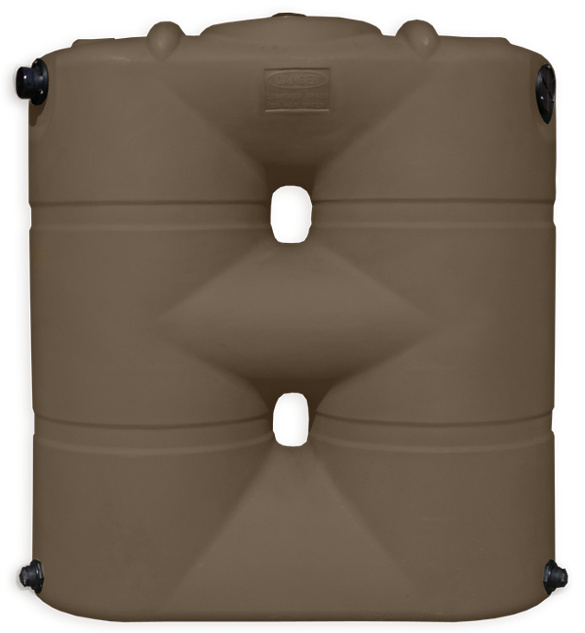Exploring the Numerous Usages of Rain Storage Tanks for Residential and Commercial Residences
As the worldwide focus on sustainable living methods proceeds to heighten, the application of rainwater containers in both property and industrial settings has arised as a pertinent remedy. The diverse usages of rainwater storage tanks offer a compelling situation for their adoption, not only as a functional water-saving step but also as a testimony to accountable resource monitoring.
Benefits of Using Rain Storage Tanks
Utilizing rain storage tanks offers many advantages for both households and communities in terms of water preservation and sustainability. One of the crucial advantages of utilizing rainwater tanks is the considerable decrease in dependence on mains water system - Slimline water tanks. By catching and saving rainwater for later use, individuals and neighborhoods can lower their need for treated water, inevitably easing the worry on water therapy centers and lowering power usage related to water transportation and treatment
Additionally, rain gathering via storage tanks gives a reliable alternative water resource throughout times of water limitations or shortages. This kept rain can be utilized for different non-potable objectives such as irrigation, flushing bathrooms, and washing clothing, decreasing the stress on standard water sources. In addition, making use of rainwater storage tanks can bring about cost financial savings for both homes and areas by decreasing water bills and decreasing the demand for expensive infrastructure growths to satisfy growing water needs.
Essentially, the usage of rainwater tanks provides a sustainable and eco friendly strategy to water management, benefiting both specific customers and the more comprehensive neighborhood in regards to water preservation, cost-efficiency, and durability.
Rain Storage Tank Usage in Irrigation
Provided the benefits of rainwater storage tanks in conserving water resources and minimizing reliance on mains water system, a substantial application hinges on making use of saved rainwater for irrigation objectives - Slimline water tanks. Rain collecting systems can properly gather and keep rainwater, offering a sustainable water resource for sprinkling gardens, lawns, and agricultural fields. By using rain for watering, property owners can minimize their dependence on treated water resources, causing cost financial savings and ecological advantages

One of the key advantages of using rainwater for watering is its purity. Rainwater is normally soft and devoid of the chemicals and ingredients frequently located in keys water, making it optimal for nourishing plants without the risk of damaging impacts. Additionally, rainwater goes to ambient temperature, which can benefit plant growth by preventing temperature shocks that can accompany cold keys water.
Rain Storage Tanks for Bathroom Flushing

Executing rain containers for toilet flushing is a cost-effective and eco-friendly practice that can be easily incorporated right into both domestic and business homes. The kept rain can be used to flush toilets by linking the tank to the existing pipes system. This easy yet efficient remedy can significantly reduce water consumption in a building, specifically in areas where water shortage is a i was reading this worry.

Including Rainwater Tanks in Landscape Design
An effective approach for boosting sustainability in landscape design entails incorporating rainwater storage tanks to optimize water usage and advertise environmentally friendly techniques - Slimline water tanks. Integrating rain containers in landscaping provides countless advantages for both household and industrial properties. These containers can capture and keep rain runoff from roofing systems, which can after that be utilized for watering gardens, lawns, and plants. By utilizing rainwater for irrigation objectives, building owners can reduce their dependence on municipal water sources, leading to set you back savings and preservation of priceless water sources.
Along with supplying a lasting water resource for landscaping needs, rainwater storage tanks can likewise assist in managing stormwater overflow. By recording rain that would otherwise move right into tornado drains pipes, these tanks can reduce erosion, lower flooding risks, and stop contamination of all-natural water bodies. Additionally, including rainwater storage tanks in landscape design can add to the general visual allure of the residential next page or commercial property, showcasing a dedication to ecological stewardship.
Industrial Applications of Rainwater Containers
Utilizing rain storage tanks in commercial settings provides a lasting option for water monitoring and preservation, benefiting companies and the atmosphere alike. Business applications of rainwater tanks are varied and increasingly prominent due to the expense financial savings and environmental advantages they supply. One key business use is for watering purposes, where gathered rainwater can be utilized to water landscape design, yards, and farming fields surrounding industrial residential properties. This can result in substantial reductions in water expenses and reliance on community water resources.
Moreover, rainwater storage tanks can be incorporated right into the fire suppression systems of industrial buildings. By having a committed water source for firefighting objectives, businesses can boost their fire security actions and possibly reduce insurance coverage premiums. Furthermore, rainwater gathered in tanks can be dealt with and used for non-potable objectives within business buildings, such as flushing commodes, cleansing, and cooling down systems. This not just conserves fresh water sources however additionally lowers operating prices for services. In general, the unification of rainwater containers in commercial setups presents a functional and ecologically responsible technique to water management.
Conclusion
In verdict, rain storage tanks use countless advantages for both property and business homes. From irrigation to toilet flushing and landscape design, using rain containers can help preserve water resources and lower water expenses. Furthermore, integrating rainwater tanks in commercial setups can lead to substantial cost financial savings and environmental benefits. Generally, the versatility and sustainability of rainwater containers make them a useful financial investment for any kind of residential property proprietor aiming to increase water performance.